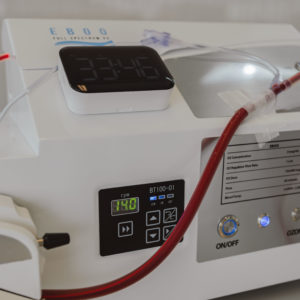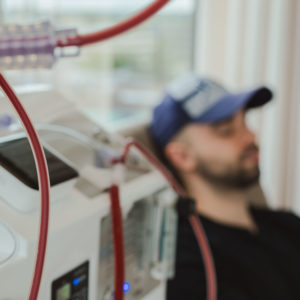5 min|Integrative
Mastering Gut Harmony: 5 Essential Steps to a Healthy You
Gut HealthAn Unhealthy Gut Leads To An Unhealthy Body
We are beginning to scratch the surface of the gut's influence on our health, and with this, developing an understanding that an unhealthy gut leads to an unhealthy body. This knowledge points to restoring gut health as one of the most important goals of medicine. Researchers have discovered many triggers that increase the likelihood of developing a damaged, or 'leaky gut', as well as components of the gut that increase the ability of our gut to defend against those triggers.
For example, exposure to certain substances increases the body's production of zonulin, a molecule that influences how tightly the cells of the gut lining are linked. More zonulin means more gaps between cells, allowing free passage of pathogens, antigens, and toxins into our bloodstream that should normally be kept out (1). Learn more

Step 1. Remove the Harmful
The first step in healing the gut is removing anything that contributes to leaky gut. This includes grains, legumes, alcohol, dairy, and nightshades, as they all contain substances that can increase the permeability of the gut. These components, such as prolomins, saponins, agglutinins, lectins, phytic acid, can wreak havoc on the gut lining by increasing zonulin or directly damaging the enterocytes of the gut lining (2).
Additionally, exposure to medications such as non-steroidal anti-inflammatories (NSAIDs) and proton pump inhibitors, as well as toxins including pesticides and ethanol alter components of the intestinal barrier and can contribute to the development of leaky gut (3, 4, 5).
Step 2. Replace the Good
Once the harmful has been removed, it is essential to bring in nutrient-dense, organic, non-GMO foods such as fruits, vegetables, wild fish, pastured eggs, chicken, grass-fed beef, wild game meat, herbs, spices, healthy fats (olive oil, avocado oil, olives, coconut oil, nuts, seeds, etc.). This is often referred to as a Paleolithic, or 'primal' diet, as it mimics what our ancestors ate prior to the agricultural revolution.
There are many variations of this diet plan, but the underlying goal is the same: to remove known triggers of inflammation and irritation in order to allow the body to restore itself to health. However, it is not enough to remove certain foods; they must be replaced with a significant amount of nutrient-dense vegetables to promote healing. When the gut lining is damaged, there is high likelihood that certain components of digestion have been damaged.
Due to medications, stress, or age, the stomach may not produce enough stomach acid (HCL). Without enough HCL, the gallbladder and pancreas may not be stimulated to release bile and enzymes. Supplementing with HCL, bile, and/or enzymes can be beneficial in restoring the bodies' natural digestion and absorption.
Step 3. Reinoculate with Healthy Gut Bacteria
A healthy gut microbiome protects the epithelial lining of the gut. However, the microbiome can become imbalanced, or dysbiotic, due to a variety of influences such as C-section birth, lack of breastfeeding, use of antibiotics, poor diet, stress, and many other factors (6, 7, 8, 9, 10). Probiotics and soil-based organisms directly repopulate the gut with bacteria that suppress the growth of pathogens, strengthen the integrity of the intestinal lining, and modulate the immune system response of the gut (11).
Fermented foods, such as kimchi, sauerkraut, kefir, yogurt, provide healthy bacteria, as well as fiber and sugars that feed beneficial strains of bacteria (12). There are many additional healthy habits that can promote healing of your gut microbiome. However, there is a caveat when it comes to the addition of gut bacteria - if you have a gut infection, such as a yeast overgrowth or small intestinal bacterial overgrowth (SIBO), fermented foods and probiotics may worsen your symptoms. Depending on the state of our gut health, you may need professional guidance in regards to treating infections or severe dysbiosis.
Step 4. Repair the Gut Lining
Luckily, gut cells are renewed very quickly. The intestinal epithelium is replaced roughly every 5 days by stem cells (13). Certain nutrients support the growth of new cells, removing old and damaged cells, healing the gut lining. L-glutamine, an amino acid, provides fuel for enterocytes, the epithelial cells that line the gut, to replicate (14). It is sold as a supplement, but is also present in certain foods such as bone broth and cabbage juice.
Collagen synthesis is a key component of intestinal healing (15). Collagen can be supplemented by using collagen powder. Herbs such as marshmallow root, slippery elm, and aloe vera are anti-inflammatory and may help promote gut healing.
Step 5. Relax
Aggressive and overly strenuous exercise cause leaky gut, while moderate exercise can improve gut barrier function (16, 17). Stress has been linked to alterations in gut motility, decreased blood flow to digestive organs, and damaged tight junctions (18). Reducing stress, moderate exercise, and creating a relaxed, undistracted environment to eat are helpful components of gut healing.
After healing, we may find that we have greater resiliency against triggers of leaky gut. Certain people may tolerate the reintroduction of some lectins or other gut irritants. However, leaky gut and associated symptoms can develop slowly over time; a lack of symptoms with the initial reintroduction of a food does not necessarily indicate a lack of gut damage. For many people, complete avoidance of the triggers of leaky gut is essential. This may seem daunting, but healing your gut may be your key to great health. Although it takes great commitment, this process puts your health back in your own hands, empowering you to heal yourself.
Takeaway
In order to heal the gut, we need to remove exposure to the substances that increase zonulin and damage tight junctions, while promoting healthy enterocytes, the cells that comprise the intestinal lining. A well-rounded gut-healing plan aims to remove the triggers of leaky gut, while strengthening our body’s natural defenses against gut irritation.
Are you looking for support with improving your health and longevity?
Book a consultation with one of our experienced Naturopathic Doctors today!
References
- https://www.ncbi.nlm.nih.gov/pmc/articles/PMC3384703/
- https://www.ncbi.nlm.nih.gov/pmc/articles/PMC3705319/
- http://www.nature.com/articles/ctg201654
- https://www.ncbi.nlm.nih.gov/pmc/articles/PMC3945755/
- http://ajpgi.physiology.org/content/286/6/G881.long
- https://www.ncbi.nlm.nih.gov/pubmed/9890463
- https://www.ncbi.nlm.nih.gov/pubmed/10630441/
- https://www.ncbi.nlm.nih.gov/pmc/articles/PMC5555213/
- https://www.ncbi.nlm.nih.gov/pubmed/20664075/
- https://www.ncbi.nlm.nih.gov/pubmed/18537636/
- https://www.ncbi.nlm.nih.gov/pmc/articles/PMC3539293/
- https://www.ncbi.nlm.nih.gov/pmc/articles/PMC3904694/
- http://www.nature.com/articles/nature07935
- https://www.ncbi.nlm.nih.gov/pmc/articles/PMC4369670/
- https://www.ncbi.nlm.nih.gov/pubmed/3792777
- http://bjsm.bmj.com/content/48/12/980
- https://www.ncbi.nlm.nih.gov/pubmed/24291325
- https://www.ncbi.nlm.nih.gov/pubmed/23000955
Related Articles

5 min|Dr. Alex Chan
EBOO for Chronic Inflammation: A Natural Approach for Systemic Relief
Regenerative Medicine, EBOO Therapy
5 min|Dr. Alex Chan
EBOO Therapy for Autoimmune Conditions: Exploring the Potential Benefits
Autoimmune Disease, Regenerative Medicine, EBOO Therapy


